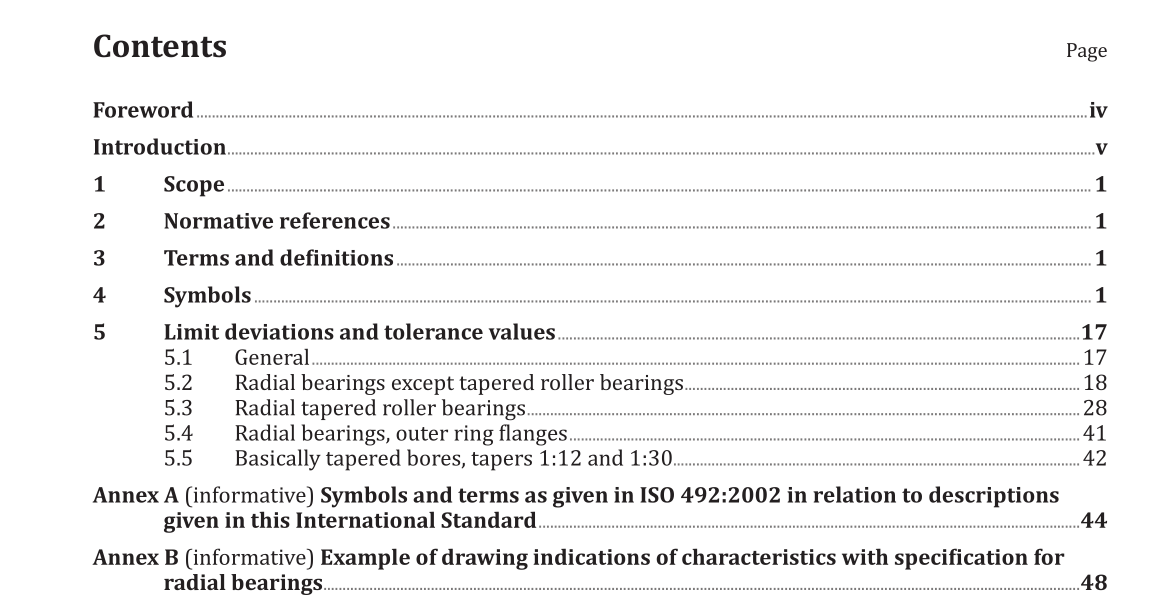ISO 492:2014 pdf download.Rolling bearings — Radial bearings — Geometrical product specifications (GPS) and tolerance values
1 Scope
This International Standard specifies dimensional and geometrical characteristics, limit deviations from nominal sizes, and tolerance values to define the interface (except chamfers) of radial rolling bearings. Nominal boundary dimensions are defined in ISO 15, ISO 355 [2] and ISO 8443 [9] . This International Standard does not apply to certain radial bearings of particular types (e.g. needle roller bearings) or for particular fields of application (e.g. airframe bearings and instrument precision bearings). Tolerances for such bearings are given in the relevant International Standards. Chamfer dimension limits are given in ISO 582.
2 Normative references
The following documents, in whole or in part, are normatively referenced in this document and are indispensable for its application. For dated references, only the edition cited applies. For undated references, the latest edition of the referenced document (including any amendments) applies.
ISO 15, Rolling bearings — Radial bearings — Boundary dimensions, general plan
ISO 582, Rolling bearings — Chamfer dimensions — Maximum values
ISO 1101, Geometrical product specifications (GPS) — Geometrical tolerancing — Tolerances of form,orientation, location and run-out
ISO 5593, Rolling bearings — Vocabulary
ISO 14405-1, Geometrical product specifications (GPS) — Dimensional tolerancing — Part 1: Linear sizes
ISO/TS 17863, Geometrical product specification (GPS) — Geometrical tolerancing of moveable assemblies
3 Terms and definitions
For the purposes of this document, the terms and definitions given in ISO 1101, ISO 5593, ISO 14405-1,and ISO/TS 17863 apply.
4 Symbols
To express that the ISO/GPS system, ISO 8015 [8] , is applied, the dimensional and geometrical characteristics shall be included in the technical product documentation (for example, on the drawing). The dimensional and geometrical specifications, associated to these characteristics are described in Table 1 and Figures 1 to 17. Descriptions for symbols are in accordance with GPS terminology; relationships with traditional terms are described in Annex A. A tolerance value associated to a characteristic is symbolised by t followed by the symbol for the characteristic, for example t VBs. In this International Standard, the ISO default specification operator for size is in accordance with ISO 14405-1, i.e. the two-point size is valid. Some specification modifiers are described in Annex D.
ISO 492:2014 pdf download
